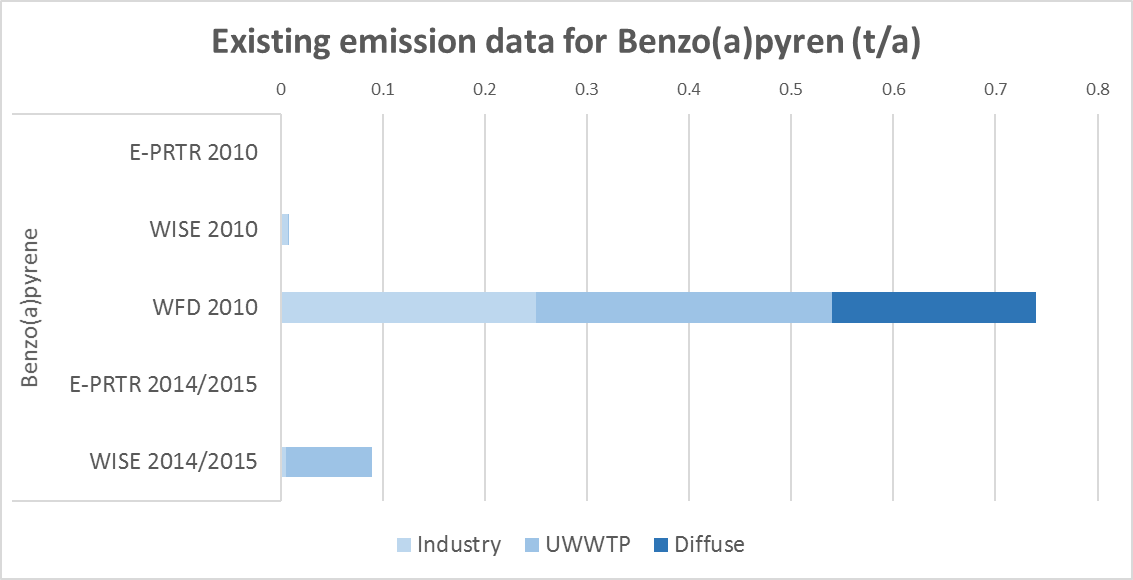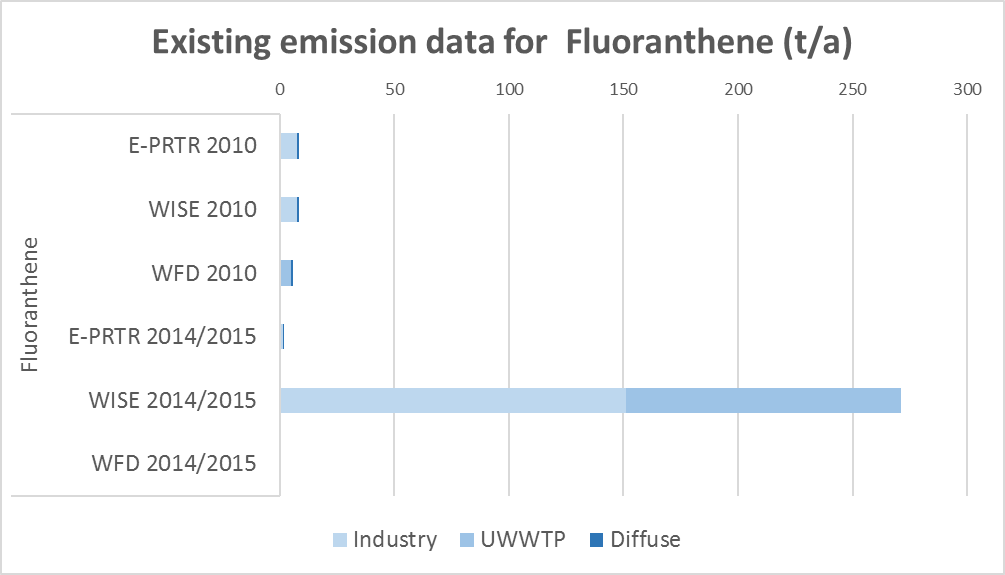Post a comment on the text below
3.4.2. Polycyclic aromatic hydrocarbons (PAHs)
Sources and uses
PAHs are a natural component of coal and oil, historically being used in wood preservatives and tar products. They are mainly formed by incomplete combustion of organic material, such as coal, petrol and wood, and are commonly released into the atmosphere as small particulates (Abdel-Shafy and Mansour, 2016). Sources to the European environment now include vehicle exhausts, coal-fired power generation, domestic heating and forest fires.
Toxicity and EQS
The PAH substance group comprises a large number of substances, with different toxicities and environmental fates (EC, 2011a). EQS have been set for seven of the most toxic PAH, as representatives of the whole group. Two of these are separately listed (anthracene and fluroanthene) while the other five are grouped, with the “lead substance” being benzo(a)pyrene.
PAHs cause cancer (e.g. they are present in cigarette smoke). The EQS is set to protect humans, who are the most sensitive species through consumption of fishery products.
WFD status
PAHs cause failures to achieve good chemical status in 100s-1000s surface water bodies (table 3.2), across 9-13 Member States. There is however some skewing of the results – over 1000 water bodies failed for benzo(a)pyrene in Germany and for benzo(g,h,i)perylene + Indeno(1,2,3-cd)-pyrene in France.
Emissions
For most PAHs, only a limited number of countries report emissions from industry and UWWTPs. There is more reporting of fluoranthene and anthracene, but still from fewer than half of European countries. This limited reporting means that trends can be skewed by one-off reporting of high loads[1].
Figures 3.3-3.5 give an overview of the different reported loads for anthracene, benzo(a)pyrene and fluoranthene. For all PAHs, industry and UWWTPs seem to be significant sources. Atmospheric deposition directly to surface water is the largest reported pathway, taking into account the small number of countries that report.
Figure 3.3 :Anthracene

Figure 3.4 : Benzo(a)pyrene !!!

Figure 3.5 : Fluoranthene

Notes: !!! – CAUTION – low confidence in data, as limited reporting of this substance, see Table 3.2. Details on the emissions data are given in Annex A.
An overview of the total emissions to water in Europe cannot be given for the PAHs. The data appear to be too inconsistent to assess any trends, owing to the limited number of countries reporting and inconsistent reporting between datasets.
Emissions to air have fallen substantially since 1990 (EEA, 2018c). The main sources to air are now from industry and domestic use.
Summary/Outlook
As atmospheric pollutants with multiple sources arising from the burning of organic matter, reducing the pollution of water bodies by PAHs will remain challenging. A shift to electric vehicles could reduce some diffuse sources, while that from domestic heating (as wood or coal) requires sustained and significant effort.
The low level of reporting of emissions of well-characterised pollutants such as PAHs is disappointing. There is a need for improved understanding of pressures from emissions reporting to be able to implement effective measures to reduce pollution of water by PAHs.
You cannot post comments to this consultation because you are not authenticated. Please log in.



Previous comments
POLAND
The calculation of the range of MS and water bodies failing to achieve good chemicals status needs further explanation. The comment is the same for the sections explaining other priority substances.
DE-UBA II 2.2:
'The main sources to air are now from industry and domestic use.'
We would appreciate if trasportation would also be named.